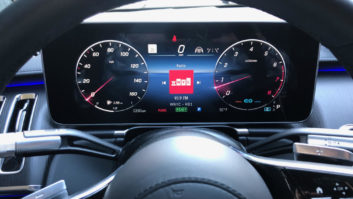While much of the wonder over satellite radio focused on orbiting transmitters and how 100 channels can be received by moving vehicles, big hurdles also had to be crossed down here on the ground.
For instance, XM Satellite Radio wanted its studios to have instant access to every music CD it could collect.
“We want to program to a variety of music genres, to present some programs pre-produced and others live, but have a live feel to everything,” said Kyle Whitney, director of broadcast applications for XM.
“Because satellite radio is a completely new service, we are making all the rules and designing the system with the best available technology,” said XM President and CEO Hugh Panero.
The company needed a storage architecture capable of processing simultaneous audio streams with near-zero latency, combined with a scalable server platform for handling the 100 channels of audio. That’s the goal the company put to supplier Dalet Digital Media Systems.
The designers also had to make the system capable of holding music from 200,000 CDs assembled by the company – about 2 million songs – and making that music available to any or all of 450 workstations.
22 TB
Dalet, which specializes in broadcast content management software, did the math. It determined that a 22 terabyte (TB) storage area network, or SAN, would give XM enough space for all present music CDs, plus room for the new ones that artists release every day. For comparison, 22TB is enough storage to hold all the printed materials in the Library of Congress, twice.
Further, playing continuous streams of audio off such a system creates a network load hundreds of time greater than would be placed on a network system built to access traditional print files. That extra load is due to the fact that playing audio cannot be done in stops and starts; it must be done in exact sequence, in exact time.
Dalet had been working with IBM on smaller systems with this capability and knew the company’s products.
“IBM’s cost-efficient solution for a high-throughput, scalable and reliable system was a key ingredient for developing the ideal solution for XM Satellite Radio’s needs,” said Anna Mae Sokusky, Dalet’s president.
Dalet hired IBM business partner Champion Solutions Group to create the infrastructure. That led to two years of scalability testing at IBM’s Dallas facilities.
The result is a 22 TB SAN including 30 RAID arrays, 22 drives each. RAID, which stands for Redundant Array of Independent Disks, gives the system backup. The music data is striped across 22 disks at a time; if one of the 22 fails, enough information exists on the remainder to continue operation unabated and to rebuild the data from the failed disk drive.
“There are spare drives built into the system,” said Bob Ward, Champion’s director of storage delivery. “A failed drive’s data begins to be rebuilt on one of these ‘hot spares’ immediately, and the task completed in from two to 24 hours, depending on the priority assigned.”
No SPFs
The bane of an equipment designer is the “single point of failure,” a component that can bring a device to a screeching halt should it fail.
One of XM’s major requirements was that the music storage system have no single points of failure. With that in mind, Champion designed 100-percent redundancy into the storage system. For instance, there’s a backup power supply, and the power supplies are hot-swappable.
“At its core, it’s designed around an IT system,” said Bill Wheeler, Dalet project manager. “It’s miles and miles of fiber.”
Wheeler says everything is brought into the digital domain as soon as possible, and the goal is to keep everything digital. “The exceptions are the microphones on the front end, and the speakers at the other end.”
If the hardware challenge was to store all that music, Dalet’s software challenge seems no less daunting: develop content management tools to find one song out of 2 million. The new system allows that access capability from any of the 450 or so workstations in the XM facility.
Scalability was a major requirement, because nobody knew where the satellite radio business was, or is, going. So the system is designed to get bigger, if necessary.
“We could increase storage another 16 TB (60 percent) without adding additional servers,” said Champion’s Ward. “We could actually increase the capacity five times with minimal effort.”
On the output side, XM has some elbow room, as well. Ward estimates they could increase the system to about 5,000 outputs.
The music itself? That fell to Loudeye Corp., which “ripped” or transcoded the CDs to MPEG Layer II at 384 kilobits per second (representing compression of approximately 4:1). MPEG Layer II at that bit rate was chosen to provide modest storage reduction while maintaining audio fidelity.
Loudeye ripped 120,000 music CDs, putting the material on DLT tape. Digital Linear Tapedrive is a popular medium for backing up computers.
The tapes were shipped to the XM facility, where the music files were transferred to the storage system. Finishing the job of ripping existing music and ripping new music as it is released fell to XM’s in-house staff.
When XM began rolling out its satellite broadcast service in September of last year, the music system got high grades.
“Everyone is delighted with how well the system is performing,” said XM’s Whitney. “The launch was a smooth as could be.
“Every programmer is beside himself at the ability to tap into our vast library of every conceivable song in any conceivable format. It is amazing to be able to search for ‘Danny Boy’ and find over 200 versions, from Westminster Choir to Riot.”









